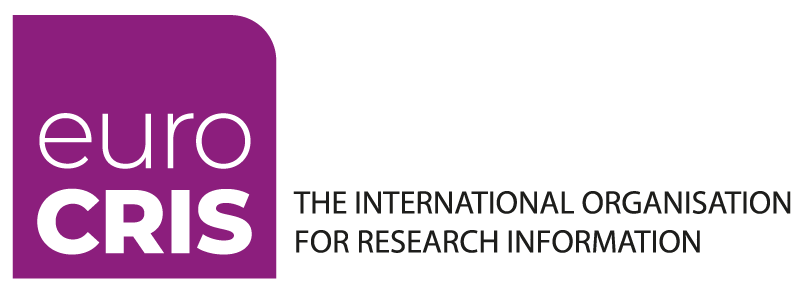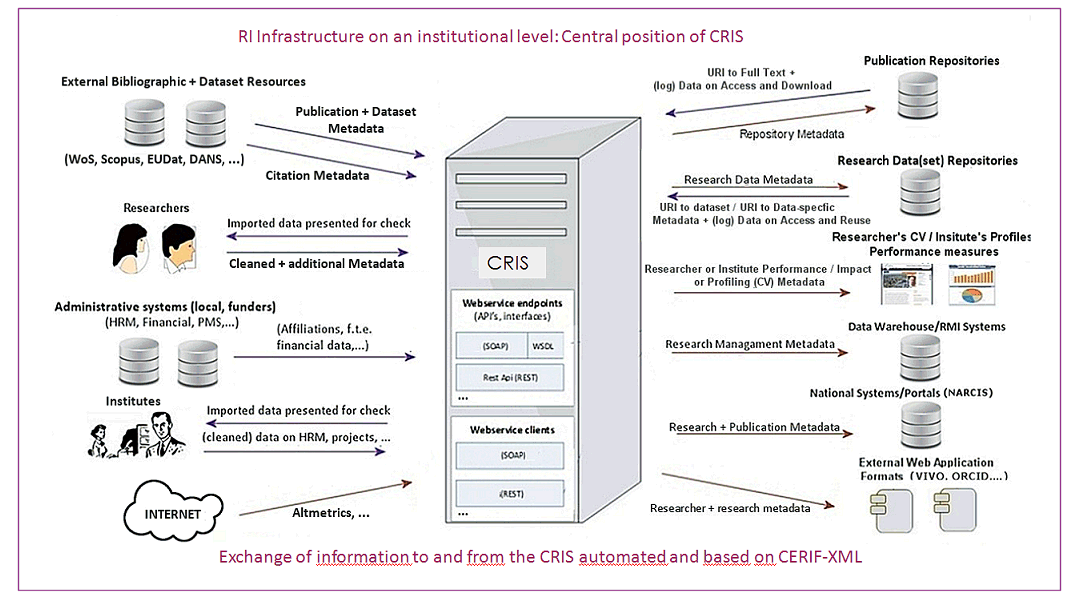The Research Process and how a CRIS can support it.
There is a traditional divide between the individual researcher or research group view of the world (peer recognition) and the organisation management view of the world. (governance and value for money). Researchers foster fierce independence and are reluctant to provide information on their activity with a plea of the quest for curiosity-led academic research freedom, despite possible advantages in cooperating with the management.
A CERIF-CRIS in the heart of an organisation can overcome this problem through the following roles:
- Research information for decision support;
- Metadata (index) to scholarly publications (white and grey) in a repository and to research datasets and software in a repository and as such the primary (registration) and leading metadata resource for institutional repositories;
- Access view to financial, human resource and project management information of an organisation (and to other relevant organisation systems);
- Provision of directory service information for authentication, authorisation, workflow and cooperative working;
- Generation of web pages presenting the organisation of intranet, DMZ and extranet, directly of from other organisational systems;
- Interoperation with other CERIF-CRIS (and their associated systems) to give a global view of research information;
- Being the local node and primary source of the institution's research information in national and international Research Information Infrastructures.
The key point is that the researcher, provided with a CERIF-CRIS, discovers that there is a large benefit (automated CV, bibliography, project participation list, institutional web page generation, part-completion of research proposals etc.) for a relatively small input effort since most input is automated or only required once and used many times. Similarly the research manager gains an overview of research activity within and outside their institution leading to better strategic decision-making.
CERIF provides interoperation of CRIS and associated systems with formal syntax and declared semantics so that it is reliable and scalable. The ideal end situation is a complete, integrated end-to-end ICT support for the R&D process chain – work programme, proposal, project, results, exploitation, wealth creation – across heterogeneous distributed CRISs.
To achieve this we need to develop (further) technologies of metadata (interoperation), GRIDs and ambient computing (ease of use) and workflow (reduce threshold barrier), thus permitting CRIS to be the central focus (providing R&D context) for research outputs such as publications, patents, products including R&D datasets and software.
So CRIS take a central position in the Research Information space, see the image below for a graphical impression of the position of a CRIS in an institution (clidk on the image for a bigger view)..



